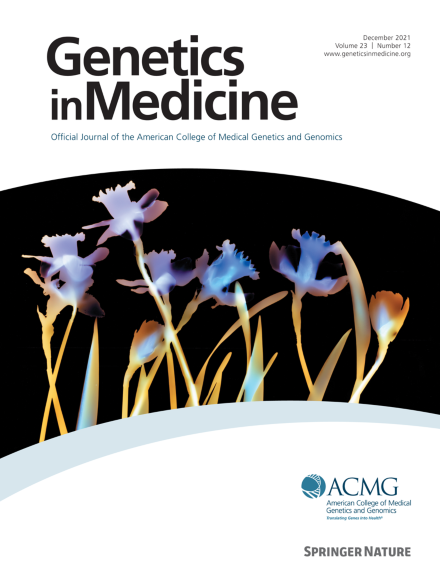多基因风险评分报告的发展和评估:对文献的系统回顾。
IF 6.6
1区 医学
Q1 GENETICS & HEREDITY
引用次数: 0
摘要
目的:多基因风险评分(PGS)的回归目前正在研究环境中进行临床实用性和有效性评估,预计 PGS 将很快在临床环境中实施。有关 PGS 交流和报告的指导原则非常有限,因此有必要对当前的研究进行识别和分析,以确定通过报告呈现 PGS 结果的最可接受方式。本综述旨在研究有关开发和评估 PGS 沟通工具(包括风险报告、视觉辅助工具和在线工具)的文献:方法:纳入通过报告、视觉辅助工具或工具对 PGS 的偏好、理解或解释进行评估的研究。检索策略应用于 MEDLINE(通过 Ovid)和 APA PsychInfo:结果:13 项研究符合纳入标准。不同研究对 PGS 的表述各不相同,包括视觉表述中的图标阵列和钟形曲线,以及数字表述中的绝对风险、相对风险和遗传风险评分。不同研究的参与者对 PGS 的理解也不尽相同。研究支持使用绝对风险和避免使用侮辱性的颜色来传达结果:为支持 PGS 的临床实施,需要开发一份由消费者和不同医护人员评估的循证 PGS 报告。本文章由计算机程序翻译,如有差异,请以英文原文为准。
The development and evaluation of polygenic risk score reports: A systematized review of the literature
Purpose
The return of polygenic risk scores (PGS) is currently being assessed in research settings for clinical utility and validity, and it is anticipated that PGS will soon be implemented in a clinical setting. There are limited guidelines regarding PGS communication and reporting; thus, there is a need to identify and analyze the current research to determine the most acceptable means of presenting PGS results through reports. The aim of this review is to examine the literature regarding the development and evaluation of PGS communication tools, including risk reports, visual aids, and online tools.
Methods
Research studies that evaluated preferences, understanding or interpretation of PGS through a report, visual aid, or tool were included. The search strategy was applied to MEDLINE (via Ovid) and American Psychological Association PsychInfo.
Results
Thirteen studies met the inclusion criteria. The presentation of PGS differed across studies, including icon arrays and bell curves for visual presentation and absolute risk, relative risk, and genetic risk score for numerical presentation. Participants’ understanding of PGS differed between studies. Studies supported using absolute risk and avoiding stigmatizing colors to communicate results.
Conclusion
To support PGS clinical implementation, the development of an evidence-based PGS report evaluated by consumers and various health care professionals is needed.
求助全文
通过发布文献求助,成功后即可免费获取论文全文。
去求助
来源期刊

Genetics in Medicine
医学-遗传学
CiteScore
15.20
自引率
6.80%
发文量
857
审稿时长
1.3 weeks
期刊介绍:
Genetics in Medicine (GIM) is the official journal of the American College of Medical Genetics and Genomics. The journal''s mission is to enhance the knowledge, understanding, and practice of medical genetics and genomics through publications in clinical and laboratory genetics and genomics, including ethical, legal, and social issues as well as public health.
GIM encourages research that combats racism, includes diverse populations and is written by authors from diverse and underrepresented backgrounds.
 求助内容:
求助内容: 应助结果提醒方式:
应助结果提醒方式:


